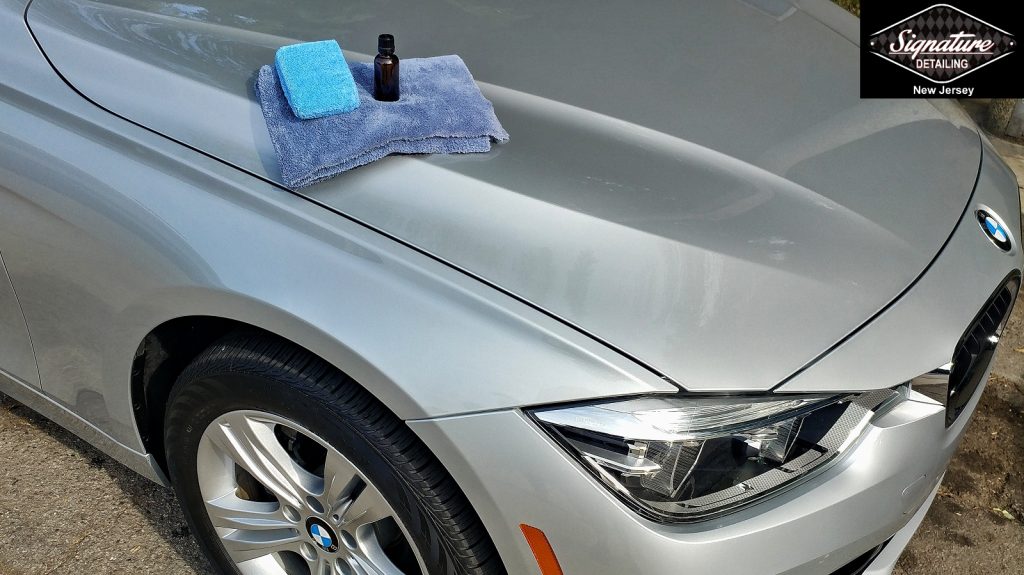Professional Strategies Used in Ceramic Coating Philadelphia for a Perfect Complete
Professional Strategies Used in Ceramic Coating Philadelphia for a Perfect Complete
Blog Article
Why Ceramic Layer Is the Ultimate Option for a Remarkable Finish
Ceramic coating has actually become a leading service for those looking for a remarkable surface for their automobiles, many thanks to its amazing durability and protective features. This innovative fluid polymer not just bonds effortlessly with factory paint yet also provides a powerful obstacle versus common risks such as scrapes, UV rays, and environmental pollutants. Its hydrophobic properties streamline upkeep while improving aesthetic charm. However, recognizing how this innovation compares to standard methods and discovering its application subtleties can disclose a lot more about its worth. What aspects absolutely set ceramic layer apart?
What Is Ceramic Finishing?

When used appropriately, ceramic coating produces a hydrophobic surface area that repels water and dirt, making it much easier to clean and preserve. Unlike traditional waxes or sealants, which commonly use short-term security, ceramic finishings can last for numerous years, depending on the product high quality and application method. The process of applying ceramic layer needs thorough preparation, including thorough cleaning and in some cases repaint improvement, to ensure ideal bonding and performance.
Ceramic layers are not restricted to auto surface areas; they can additionally be made use of on various materials, consisting of glass, metal, and plastics, offering a flexible option for boosting security. Generally, ceramic layer stands for a substantial advancement in surface area protection technology, integrating both practical and aesthetic advantages for a wide variety of applications.
Benefits of Ceramic Coating
While many surface area defense options exist, the benefits of ceramic layer stick out due to its special properties and resilient performance. One of the primary benefits is its phenomenal durability. Ceramic Coating Philadelphia. Unlike conventional wax or sealers that need regular reapplication, ceramic layers give a resilient layer that can last for several years, dramatically minimizing upkeep initiatives
One more notable advantage is improved protection versus ecological contaminants. Ceramic coverings create a hydrophobic surface area that wards off water, dirt, and various toxins, making it less complicated to cleanse. This feature not just preserves the vehicle's look but additionally decreases the danger of deterioration and oxidation, particularly in rough climate condition.
Additionally, ceramic coverings supply premium resistance to UV rays, preventing fading and deterioration of paint in time. This UV defense is essential for keeping the aesthetic worth of surfaces and cars exposed to route sunshine.
In addition, the glossy coating attained with ceramic covering improves the overall visual appeal, offering surfaces a showroom-quality luster. On the whole, ceramic coverings represent a considerable advancement in surface defense technology, supplying enduring advantages that satisfy both aesthetic and functional needs.
Exactly How It Functions
Comprehending the science behind ceramic finishes exposes exactly how they supply such remarkable protection and long life. At its core, a ceramic finish is a fluid polymer that chemically bonds with the automobile's manufacturing facility paint.
The application process includes several steps, including surface preparation, which is vital to attaining ideal bond. Once applied, the coating undergoes a curing procedure, during which it hardens and creates a semi-permanent bond with the paint surface area. This bond is what identifies ceramic finishes from standard waxes and sealants, offering a longer-lasting safety obstacle that can endure for years.
Additionally, the thickness of the coating can boost its protective top qualities, making certain that it can endure extreme conditions. Ultimately, the science of ceramic finishings combines innovative products with ingenious application methods to deliver an unparalleled degree of defense and visual enhancement for automobiles.
Contrast With Typical Techniques
When compared to standard paint protection techniques such as sealers and waxes,The advantages of ceramic coatings end up being specifically evident. While waxes use a temporary luster, generally lasting a couple of weeks to a number of months, ceramic finishes offer a long-lasting protective layer that can sustain for numerous years. This sturdiness dramatically decreases the frequency of reapplication, making ceramic coatings an extra affordable solution over time.
In addition, traditional techniques often require extensive preparation and numerous applications to attain an acceptable degree of defense. On the other hand, ceramic layers bond at a molecular level with the lorry's surface, developing a durable guard against environmental pollutants like UV rays, acid rainfall, and roadway salts. This bond enhances the car's resistance to scratches and swirl marks, which prevail with standard waxes and sealers.
In addition, the hydrophobic residential properties of ceramic coverings drive away water and dirt, leading to simpler cleansing and maintenance. On the other hand, wax and sealant-treated surfaces can bring in grime, requiring more regular washing - Ceramic Coating Philadelphia. Generally, ceramic layers not just give superior defense however also provide a more visually appealing and enduring coating, developing them as the recommended selection for critical vehicle owners
Application and Maintenance Tips

Using a foam applicator, use the finishing in little areas, adhering to the producer's standards concerning density and overlap. Permit adequate over here healing time in between coats, normally 24 hr, to ensure proper bonding. After application, it is vital to prevent exposure to water or extreme components for at the very least a week to allow the finish to fully cure.
In addition, using a ceramic maintenance spray can improve the coating's hydrophobic buildings and longevity. Normal examinations for any signs of wear will aid keep the coating's stability and protect that beautiful coating.
Conclusion
In final thought, ceramic finish arises as a remarkable option for attaining a remarkable auto coating. By forming a durable bond with factory paint, ceramic covering properly shields versus scratches, UV rays, and ecological pollutants.

Report this page